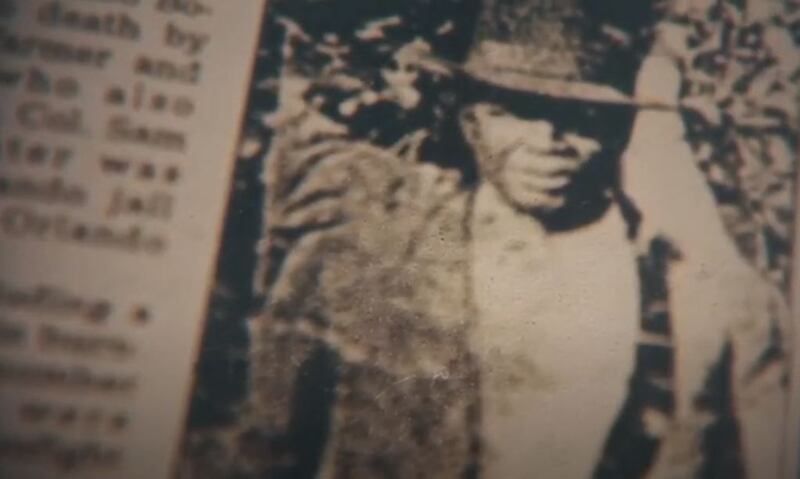OCOEE, Fla. — Investigative Reporter Daralene Jones obtained a copy of the report sent to the Florida Department of Education, and now serves as an outline for school districts across the state.
Tony Hill is the chair of the African American History Task Force that put it together.
“I think what we’re doing will be a model for the state, getting more districts as exemplary status with the African American history task force, but also following the statute of teaching K-12 African American history,” Hill said.
The task force solicited proposals from educators across the state and received only nine.
Members said after examining the submissions, it became apparent that many educators from across the state of Florida are unaware of the incident and have little or knowledge of how and when to offer instruction about the 1920 Ocoee Election event.
WATCH: The Ocoee Massacre: A Documentary Film
Last Spring, Ocoee Sen. Randolph Bracy sponsored legislation that requires the details of the massacre be taught in public schools across the state.
The idea was originally part of a financial reparations package that failed, but Sen. Bracy convinced other lawmakers to support the education portion of the measure, which passed and was signed into law last June, just months before the 100th commemoration of the massacre.
The African American history task force report is extensive and recommends the following six guidelines:
- Highlight the importance of language and semantics. The relationship between language, power, and race construction has been the subject of scholarly inquiry for at least three decades. The chosen words to identify, label, or describe various phenomena warrants consideration. Relative to the Ocoee Incident of 1920, a “riot” to some is a “massacre” to others. The word “riot” carries a negative connotative meaning which could be viewed as racially biased. While labeling the Ocoee Incident as a massacre, is closer to an authentic description of what occurred that fateful November day. The word Massacre acknowledges the race-based motive that fueled the violence which destroyed property along with causing the death of many citizens who were simply exercising their constitutional rights to vote.
- Offer “Ocoee Educator Training” module(s). Florida Educators (K12) shall be required to teach the history of the Massacre in the most grade-appropriate way possible aligned with the current Florida Standards, including assigning students to certain museums and/or public as well as private institutions to gather information about or related to the 1920 Ocoee Event. Additionally, the recommendation includes the development of a series of professional development workshops/seminars that assist educators and stakeholders with acquiring the factual accounts of the November 2, 1920-Election Day event
- Offer Grade Level appropriate activities that reflect student development. Utilize the current online teacher planning tool platform(s) like CPALMS to differentiate between lessons that are suitable for younger students versus lessons for older students to identify materials aligned to the appropriate standard-grade-subject area if these elements are available. If the activities are not available utilizing the current State or District resources, then a curriculum team should be established to assist in developing materials to be included in CPALMS.
READ: Ocoee city leadership sign formal apology for Ocoee Massacre
- Include as many sources (primary and secondary) as possible in a usable format for educators. Primary sources are the first recorders of historical events. Infusion of primary source material in the history classroom is a high-impact practice that increases student engagement and enhances content retention. Many of the current Benchmarks# and Standards require instruction for students on how to identify and use Primary Resources in the instructional setting. Identifying relevant primary sources can be done in consultation with academic historians.
- Foster Collaboration with Post-Secondary and Community Based organizations – The Governor’s 2020 mandate offers the opportunity to continue to raise the awareness of historical events like the 1920 Ocoee Massacre by facilitating partnerships between post-secondary institutions – especially colleges of Education, History, and/or Anthropology departments. Community-Based organizations, such as fraternities, sororities, churches, and civil rights groups can be called upon to offer primary source resources (i.e. oral histories, newspaper clippings, family mementos). These items could be compiled and produced into useable and adaptable formats that teachers could readily incorporate into their classroom lessons. One advantage of this recommendation is that it is cost-neutral but offers maximum return the small investment of intentional effort. The current collaboration with the suggested entities is fostered through the local school districts, colleges, and community organizations.
A white mob killed an untold number of African Americans in the area that would become Ocoee in 1920 after a Black man tried to vote in the presidential election.
The mob also burned all of the Black-owned property, eventually forcing every Black resident of the area. “It’s going to be left up to the department of education to make sure school districts implement what the statute says and the law,” Hill said. And that matters to descendants of the victims of the Ocoee Massacre.
Robert Hickey allowed us along with him, as he looked over the area, likely where his grandparents once owned land, that was burned in 1920.
Their tombstone is a reminder that they survived, but their dreams of passing on that land, died. “It makes me feel good to know that the world now is starting to find out about them, and how their contributions might have been,” Hickey said.
READ: Scholarship, loans proposed for Ocoee Massacre descendants
Click here to download the free WFTV news and weather apps, and click here to watch the latest news on your Smart TV.

WFTV






